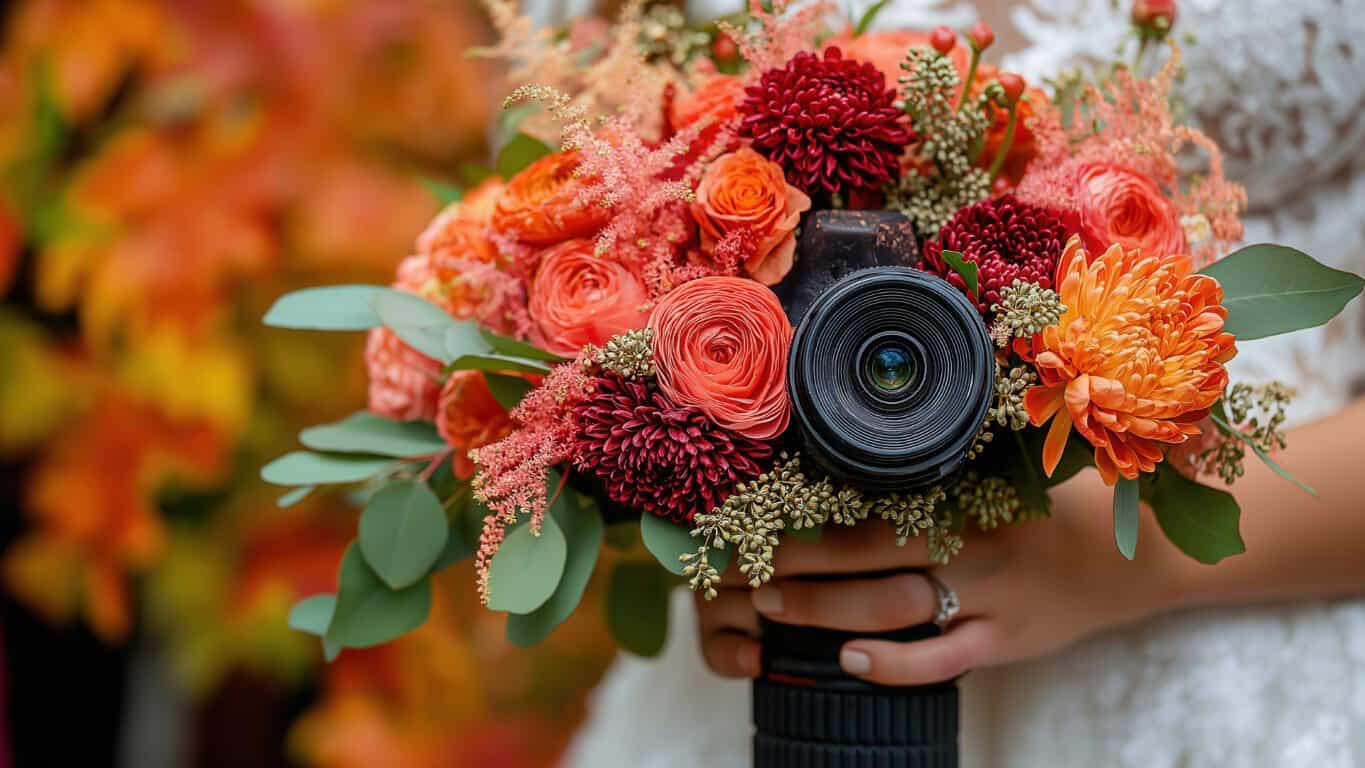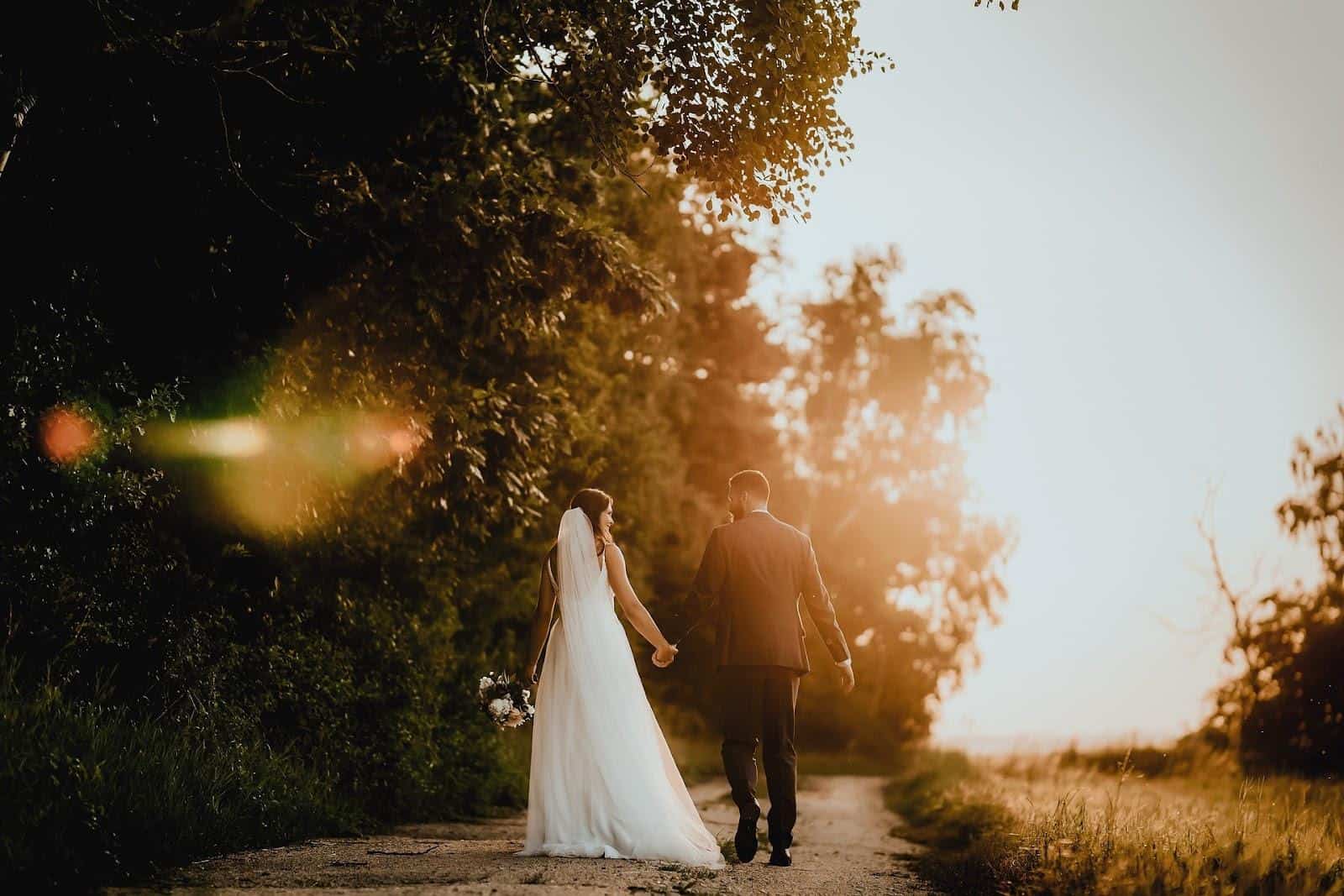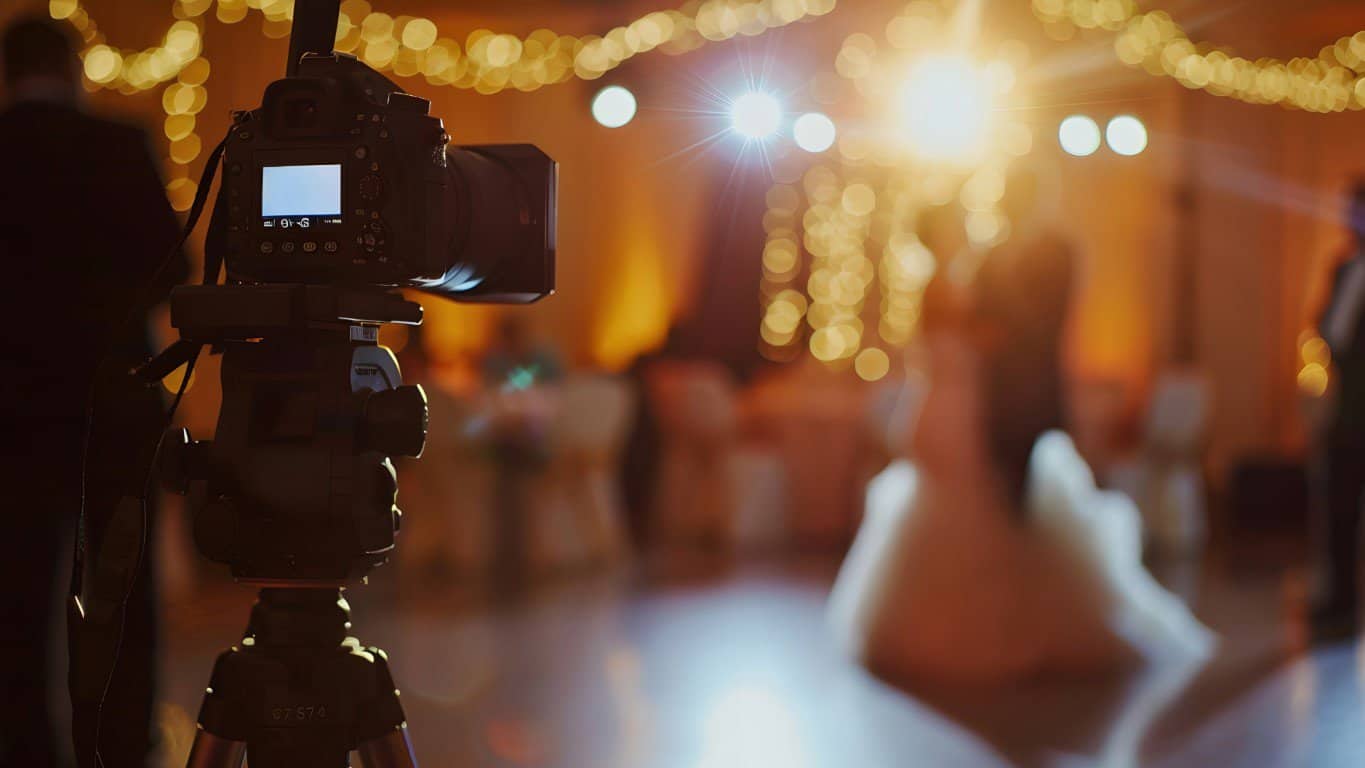Creating a wedding video is more than just capturing moments ー it’s about telling a love story.
With the right approach, you can produce a keepsake that you and your spouse will cherish forever.
There are some easy steps that help ensure creative and memorable wedding video production. And it doesn’t matter if you’re just a DIY enthusiast ー you don’t have to be a professional to create something special.
Wedding Videography Tips
Before diving into the process, you need to remember that wedding videography requires careful planning. Perhaps not as careful as planning a wedding event itself, but still.
Struggling with inspiration is a completely natural thing, so consider watching a wedding video or two beforehand.
While creating your perfect video, you’ll be dealing with emotions, movement, and lighting challenges throughout the day. Here are a few things to keep in mind to make the process easier:
Plan Ahead
Learn the wedding schedule so that you can prepare for key events like the vows, the first dance, and toasts. If possible, ask the spouses or the wedding planner for the list of all the event activities.
You have to know what important moments are coming and when. This will help keep everything under control and record all the necessary footage.
Capture Emotions
Weddings are filled with emotional moments, and the footage need to have a focus on those genuine reactions.
Smiles, laughter, happy tears ー when captured, all these moments will remind the spouses about the emotional atmosphere of their wedding.
Be Discreet
You don’t want to be in the way of the couple and their guests having fun. Remember: this is their day, so there has to be as little distraction as possible.
Blend into the background while capturing candid moments. This way, the couple and the guests will look natural as they won’t be constantly trying to pose.
Discuss the Music Beforehand
Adding music to a wedding video can elevate the entire thing.
It’s helpful to plan the audio design beforehand, even if it’s just some bullet points. This will guide you in the shooting footage process and might even give you a couple of shot ideas.
How to Make a Wedding Video: 8-Step Guide
Now that we have the basics covered, let’s jump into the 8 steps to create a stunning wedding video.
And who knows, perhaps you’ll become a pro editor after this and will be asked to create more wedding videos and even video invitations.
1. Choose Video Equipment
The first step in wedding video production is choosing the gear.
If you’re serious about wedding filming, invest in a good camera that shoots in Full HD or 4K. You’ll need a range of lenses ー wide-angle for group shots and zoom lenses for close-ups without disturbing the couple.
Don’t forget to pack extra batteries, memory cards, and a sturdy tripod. A portable lighting kit is also essential for low-light situations, like during the reception.
However, you don’t need to feel pressured into purchasing some expensive video equipment. Masterpieces can be created even by using a smartphone camera.
Note that some wedding venues offer a set of equipment. Make sure to contact their managers to see whether there are already some things you can use.
2. Scout the Venue
If possible, visit the venue before the wedding day to check lighting conditions and find the best spots for filming.
Identify where key moments will happen. This allows you to plan the best angles.
If you’re unsure about a couple of moments, don’t be afraid to consult the wedding venue manager. They’ve been through hundreds of weddings, so they’re sure to have some useful advice.
3. Capture Key Moments
Make sure to shoot all the essential moments: the bride walking down the aisle, the vows, the first kiss, the first dance, and the toasts. It’s these moments that tell the story of the day.
However, don’t forget to capture the details ー the decorations, activities, and even reactions from the guests. These clips will add depth to the wedding video.
4. Keep the Shots Steady
Shaky footage can ruin an otherwise beautiful moment. Use a tripod or a gimbal to ensure smooth, professional-looking shots.
If shooting involves a lot of moving around during the ceremony or reception, a shoulder rig can also help stabilize the footage.
When you’re done with the shots, make sure their format fits the editing software you’re about to use. If not, you can use a video converter to get your footage ready.
5. Edit with Professional Software
Once the entire wedding is filmed, it’s time to begin wedding video editing.
If you’re a beginner, try going with something easy-to-use, like Movavi software. Their video editor is user-friendly and perfect for DIY creators, yet powerful enough to produce professional-looking results.
Organize your clips chronologically and trim any unnecessary footage. Then, piece together the scenes to tell a cohesive story. Add smooth transitions between the scenes to keep natural flow.
6. Add Music and Audio
Music is a must for a wedding video. It can add emotional depth to your project and even make viewers shed a couple of tears while watching.
If you’ve discussed the music with the spouses beforehand, you might already have a couple of songs they’d like to be in the video. Start with them, and then use your creativity.
Choose songs that reflect the couple’s personality and the mood of the day. Since the spouses will hardly need the wedding video for commercial purposes, you may add copyrighted music. However, you can also use royalty-free libraries to find appropriate tunes.
Additionally, make sure the vows and speeches are clearly audible. Sync the music with the key moments to emphasize emotions and adjust the volume levels to ensure the clear dialogue.
7. Incorporate Creative Elements
Some couples prefer simple and touching videos, while others want theirs to stand out. Anyway, a small (or big, no pressure) number of creative elements can turn your wedding video into a form of art. Just make sure the couple is okay with that.
Consider adding things like slow-motion effects, time-lapse shots of the venue, or black-and-white filters for a classic feel.
Titles and captions are another great idea. You may introduce different segments of the day, like “The Ceremony” or “First Dance” by using them. These creative touches are usually simple to add but look excellent in a video.
8. Export the Final Video
Once you’re satisfied with your edit, it’s time to export the final wedding video.
Choose the appropriate format depending on where the couple want to share the video. If they do want to share it, that is.
Tell them they don’t have to limit it to just one social media platform. For example, you can render several options: a horizontal longer video to post on YouTube and a couple of short vertical clips for Instagram stories.
Ensure high resolution ー usually 1080p or 4K for a sharp, professional-quality result.
Don’t forget to back up the final video and original files on external drives or in the cloud. The couple might request more edits or ask you to share the raw footage with them.
Bottom Line
Wedding videography is a mix of creativity, technical skills, and timing.
Remember to focus on the emotions, tell the story, and use the best software to pull it all together seamlessly.
With proper planning, careful filming, and thoughtful editing, your wedding video production will leave a lasting impression on the couple and all their friends and family.